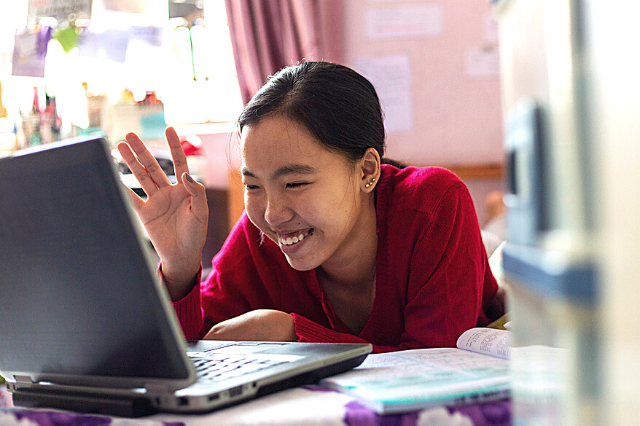How Remote Supports Help People with Disabilities Stay and Feel Safe
The need for safety and belonging is a shared desire for us all. People thrive best when they feel safe and nurtured – it goes beyond having a sense of security to fully live out this reality with assurance.
About 7 to 8 million people in the United States experience some form of intellectual or developmental disability (IDD). Yet many people do not know about the services that can help disabled adults feel safe and live their best lives.
People with disabilities are a vulnerable population, and many statistics show that they face increased risks of victimization and isolation.
Home and Community Based Services (HCBS) is a program funded through Medicaid. It’s for people with disabilities and older adults to receive services in their own homes and communities. Remote Supports is an HCBS service that disabled adults can select to provide support so that they can live independently, with self-determination and increased focus on a life of their choosing.
You might be wondering “What is Remote Supports?” Read more to find out about Remote Supports and how it can support people with disabilities to achieve independence and feel safe.
What are Remote Supports?
Remote Supports is a unique service model that uses off-site support and assistive technologies to provide support services to disabled adults and aging adults who want to live independently. It provides the autonomy and privacy that people deserve while providing support around their needs, life goals, and desires.
Ultimately, the objective of Remote Supports as an HCBS service is the inclusion and integration of people with IDD into the community.
How Assistive Technologies can help IDD Individuals
Remote Supports help people with disabilities live safer in their homes.
Assistive technology improves daily living by enhancing the capabilities of people. Technologies such as sensors that detect movement, heat, smoke, and moisture; medication dispensers that remind and dispense medication at selected times. These are just a few among other technologies, that can cater to the specific needs of each person.
Seizures, elopement or wandering from the home, medication crises, and behavioral challenges can be managed with Remote Supports.
Meet Stacy
Stacy, a Remote Supports User, tells us how the service continues to positively impact her living.
“They really make me feel good when I talk to them (support staff.) I used to feel sick all the time. If I had an issue, I would need to call the ambulance but since I’ve had SafeinHome, I’ve been calling them if I need them.”
Our support staff is trained by licensed psychologists in acceptance and commitment methodology. We are equipped with the knowledge and emotional intelligence to connect with our individuals on a personal level.
Things happen from time to time – some of which require physical assistance. We think ahead, creating systems that allow us to connect with the person’s support circle and only if necessary, reach out to emergency services.
SafeinHome Remote Supports Services offer a variety of safety protocols, to help individuals with disabilities feel more comfortable and secure in living life independently.
We are about building strong connections, fostering trust, and being there for the people we serve. We see Remote Supports as a partnership to enable growth, self-advocacy and becoming the best versions of themselves. With strong emotional and close-knit support, the people we serve can make better decisions to live a life of their choosing.
Just like us, individuals with disabilities live with family, friends, partners, roommates, or alone. SafeinHome provides support in whatever setting people with IDD choose to live.
Learn more and find out if Remote Supports is right for you or your loved one. Get in touch with SafeinHome today. You can contact us by placing a call or sending us a message here on our website.

